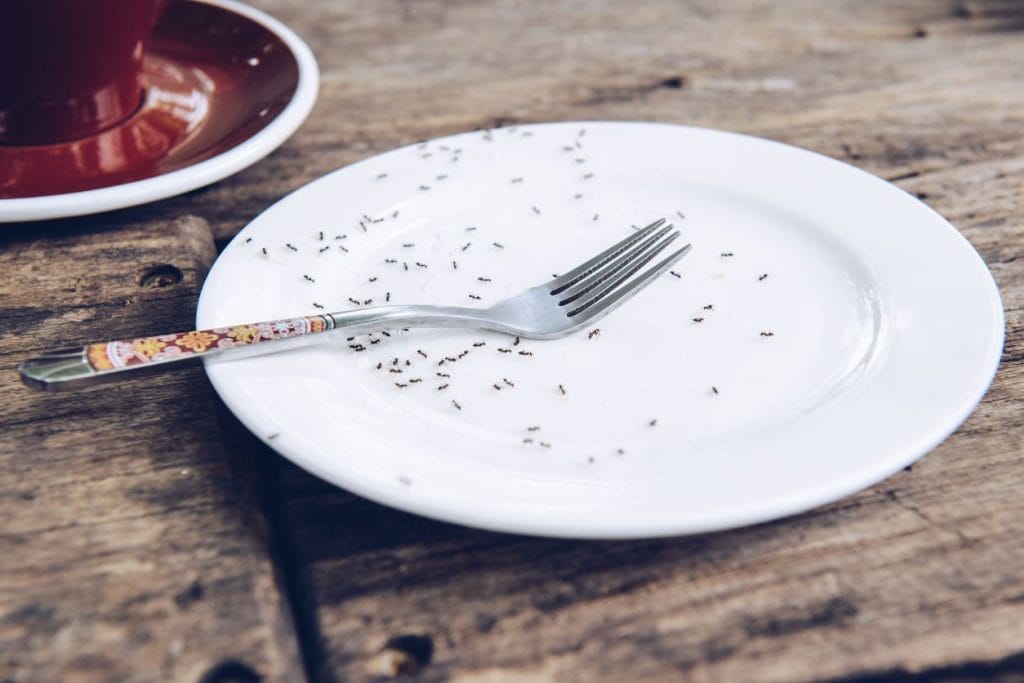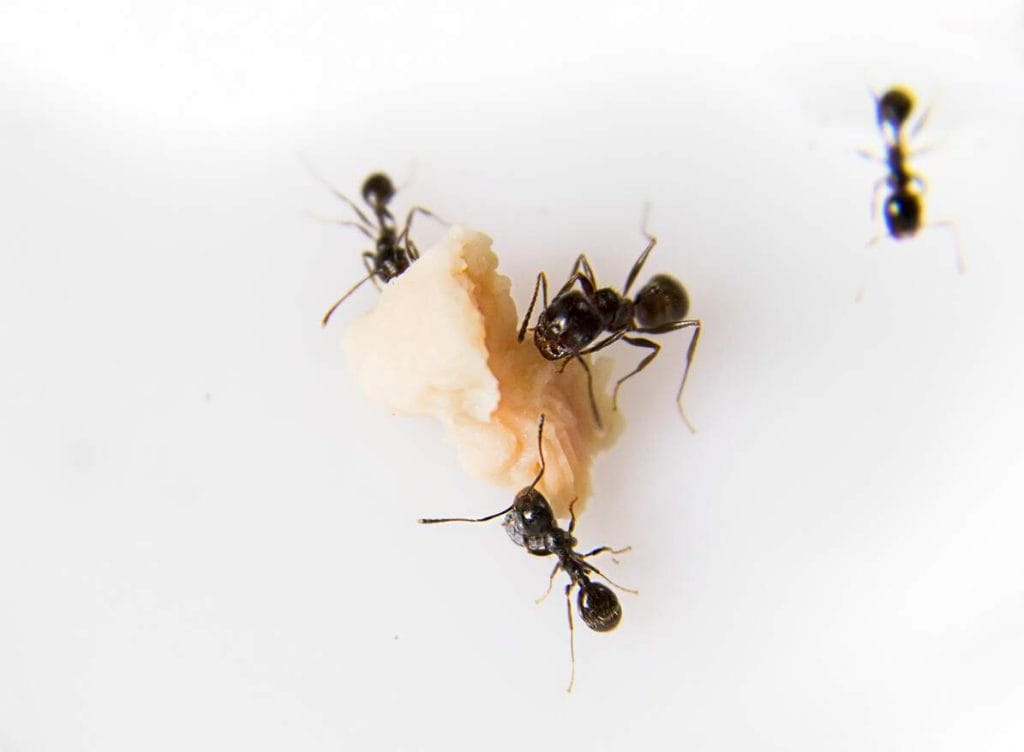
It’s next to impossible to figure out with accuracy how many ants exist on Earth. Tiny black ants can be found in almost every part of the world. Though they are one of the smallest creatures present on Earth, they can be a huge benefit to some natural habitats. Ants play a significant role in the process of decomposition as they feed on dead insects, animals and clean up the organic waste.
Because these small insects are stubborn and multiply so quickly, once they invade your house, they may stick around for a long time. If you’ve seen these tiny black ants in your home, you may be wondering how to get rid of them. In this article, you’ll learn about how these pests come into your home and some easy ways to keep them away.
Where Do Tiny Black Ants Get Into Your Home?
Tiny black ants live both indoors and outdoors. Generally, they prefer to be outside and establish their nest in the areas that are dark and protected. You can easily spot them nesting under logs, rocks, or in soil. However, when it comes to homes, these tiny insects use cracks and crevices in order to enter your homes.
Once they are able to find and make their way inside your home, they will typically look for undisturbed locations. If you are observing these pests in your home for a long time now, it means a larger infestation is at hand. Below are the two common areas where you’re most likely to find tiny black ants:
Tiny Black Ants in the Kitchen
Have you ever faced a situation where you wake up and enter your kitchen, and the first thing you see is a big trail of tiny black ants going around your kitchen top? If yes, then you don’t have to panic. Generally, these insects prefer to build their nest around the corners of the kitchen.
Ants have odor detectors that allow them to sniff out all the sources of food items. Your family members may end up spilling juices or crumbs after having snacks and meals without even knowing it, which is normal in any household.
But, tiny black ants are attracted to food in order to remain alive and growing. Food spillage is bound to happen until you are supremely careful about keeping the kitchen counter and floor clean. Pet food bowls can also pave the way for tiny black ants to thrive in your kitchen.

Tiny Black Ants in the Bathroom
For most people, their bathroom is the hygienic and cleanest area in their home. You may also think it is the only place where you would probably not see these tiny insects. If that’s true, you are wrong. After you are done taking a shower, brush your teeth or perform other hygienic activities, you end up cleaning it every now and then.
But still, due to improper ventilation and high level of humidity can invite the rally of tiny black ants. It’ll be safe to mention that ants are extremely cunning when it comes to building their nests. Thus, before shifting the colony to a new place, you’ll see only a few ants will raid around the area.
Typically, tiny black ants find their way to enter the bathroom through pipes, cracks, and holes in the wall or window of the bathroom. Often, tiny black ants get into your bathroom due to the smell of washing agents, perfumes, stagnant water, etc.
Why Are Black Ants Attracted To Your Home?
When the colony of tiny black ants is in need of heat or moisture, they tend to move indoors. Above all, like every other living thing, ants also spend their time searching for food, water, and shelter. That’s why they are attracted to homes as they consider it their prime target. In a home, anything like a piece of cake to spillage of honey can attract tiny black ants.
It is important for you to note that it doesn’t take many sugar-based food items to bring ants inside your home. While hunting for food, ants leave a scent trail as well. It helps them in locating their way back to the nest and helps other foragers follow the trail. Thus, a few ants in the house can be a reason why more and more tiny black ants are becoming your visitors.
Traps To Set Out For Tiny Black Ants
A few tiny black ants may not account for any danger, but a colony of ants rallying around your home surely gives no fun. If there’s no need to rush and buy an ant trap from the market, you can try some DIY ant traps to keep them away. Below are three traps that you can prepare at home:
Sugar and Baking Soda: You can prepare this easy mixture using powdered sugar and baking soda. Just combine them in a 2:1 ratio and spread this ant killer wherever you see an ant infestation.
Cornmeal and boric acid: Cornmeal will tempt tiny black ants. But they are unable to digest it. Ultimately, they will die slowly due to a lack of nourishment. You can purchase boric acid from any grocery store or pharmacy. Just combine them with boric acid and cornmeal in a 2:1 ratio and keep the mixture in plastic dishware.
Honey and borax powder: Tiny black ants are sweet-toothed. You can create a deadly trap for ants by mixing honey and borax powder. You can take any jam or jelly to make a thick paste if you are short of honey. Just mix two tablespoons of borax powder with honey or fruit spread, place it on a paper, or keep it wherever you notice ants.
Keep Tiny Black Ants Away From Food

As with other situations, prevention is worth it before things get worse when it comes to tiny black ant infestation. You can follow the tips listed below to keep tiny ants away from food:
- Tiny black ants get into the kitchen through gaps around corners or windows. Ensure to seal the cracks and gaps so that there remains no way to enter the kitchen.
- After you are done having meals or snacks, make sure to clean the table area properly. Sweep up and dispose of all crumbs.
- Leave no dirty dishes in the sink of the kitchen as it attracts hungry ants. Rinse the plates and bowls with water so that there are no leftover food scraps.
- Vegetables, ripe fruits, and other food items that are left exposed will ultimately attract tiny black ants. So, keep them in a sealed container or in the refrigerator.
- Clean the pet bowls once they are empty. Make sure there are no crumbs or spillage.
- Keep the area around the dustbin neat and clean. Also, ensure to have a dustbin with a lid.
Clegg’s Pest Control
With all the traps mentioned above, you should be able to keep them away from your house. However, if you see no improvement, call the professionals to get rid of these tiny black ants in the kitchen or any other specific area of your home. At Clegg’s Pest Control, we have dealt with this kind of pest many times before. Fill out the contact form below or give us a call and we will come to inspect your home for free!
